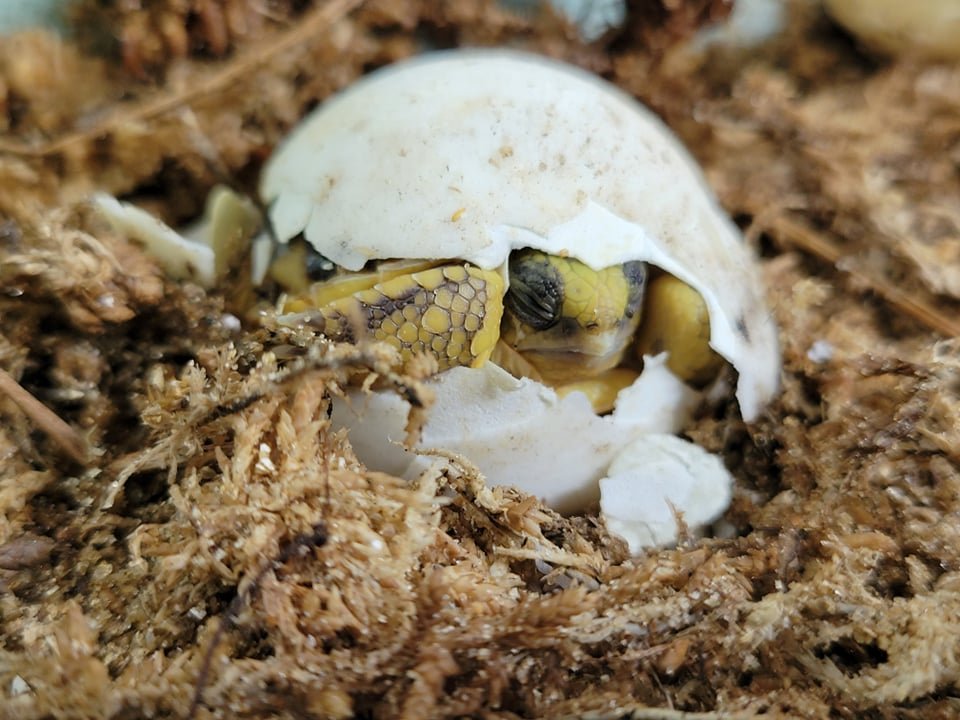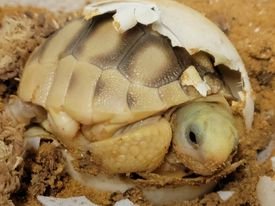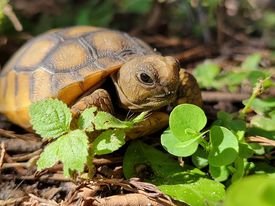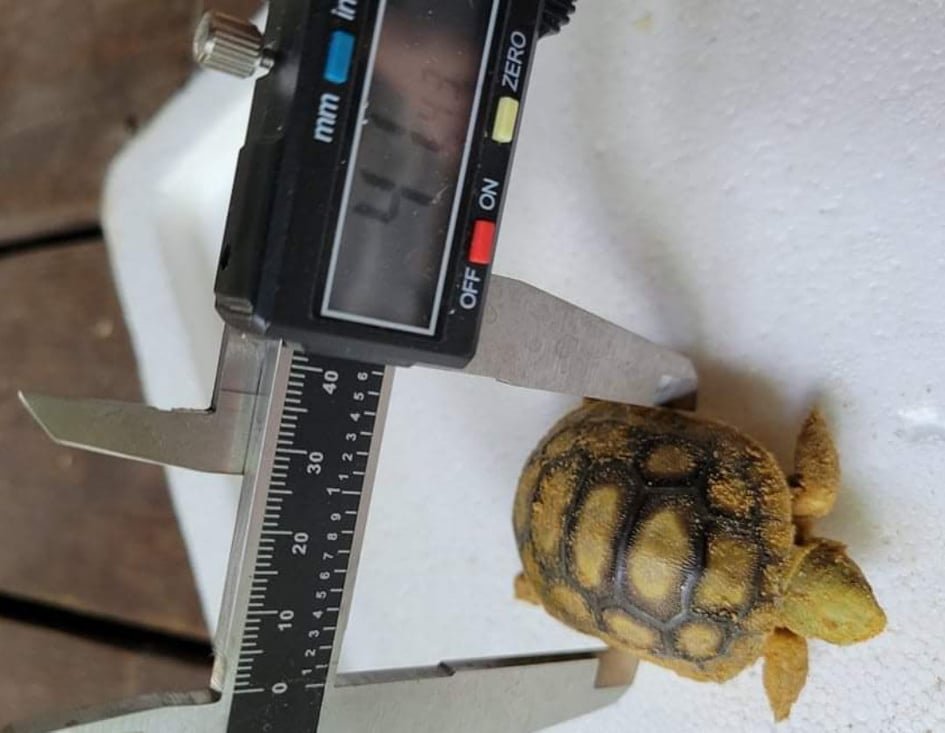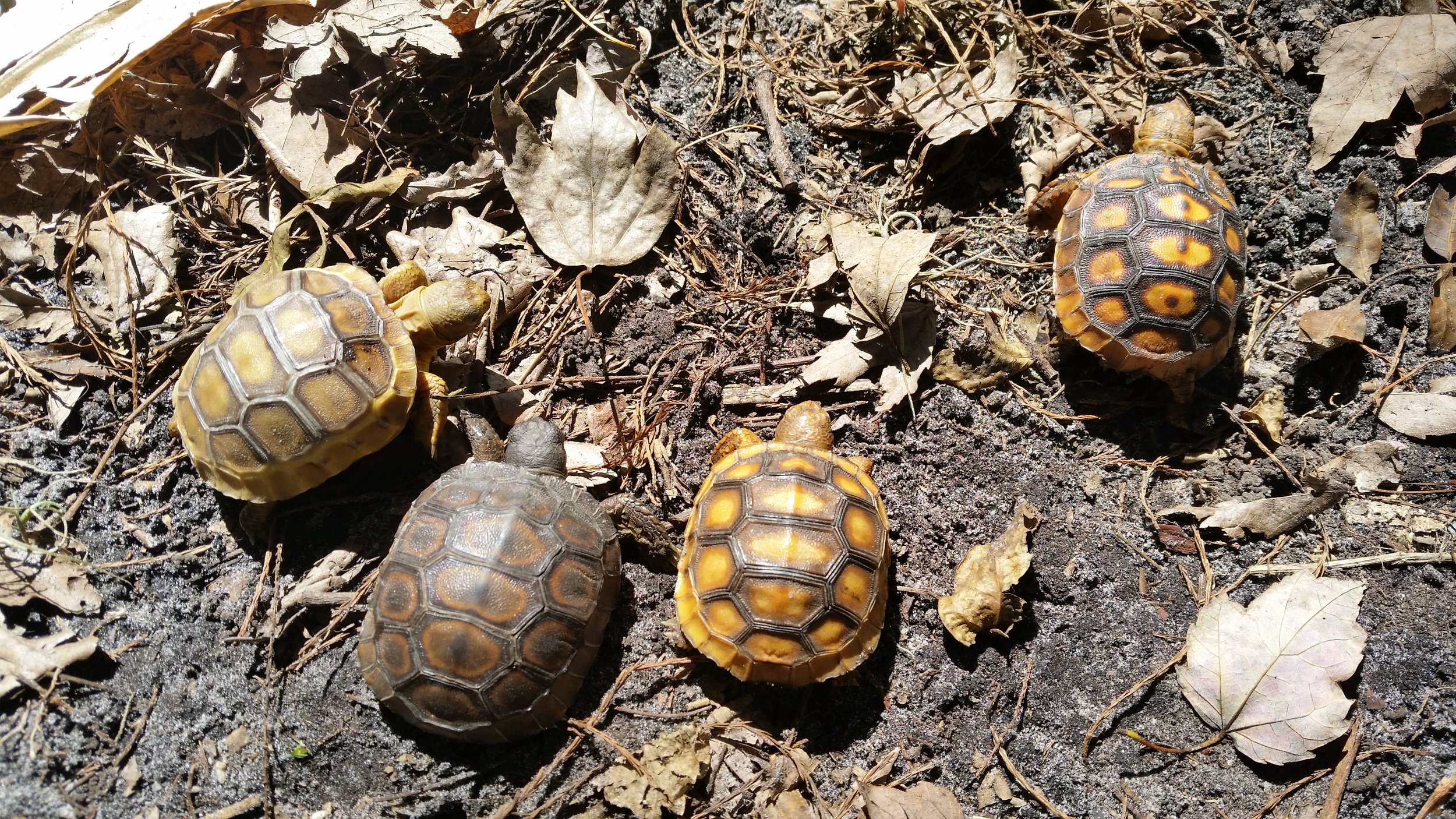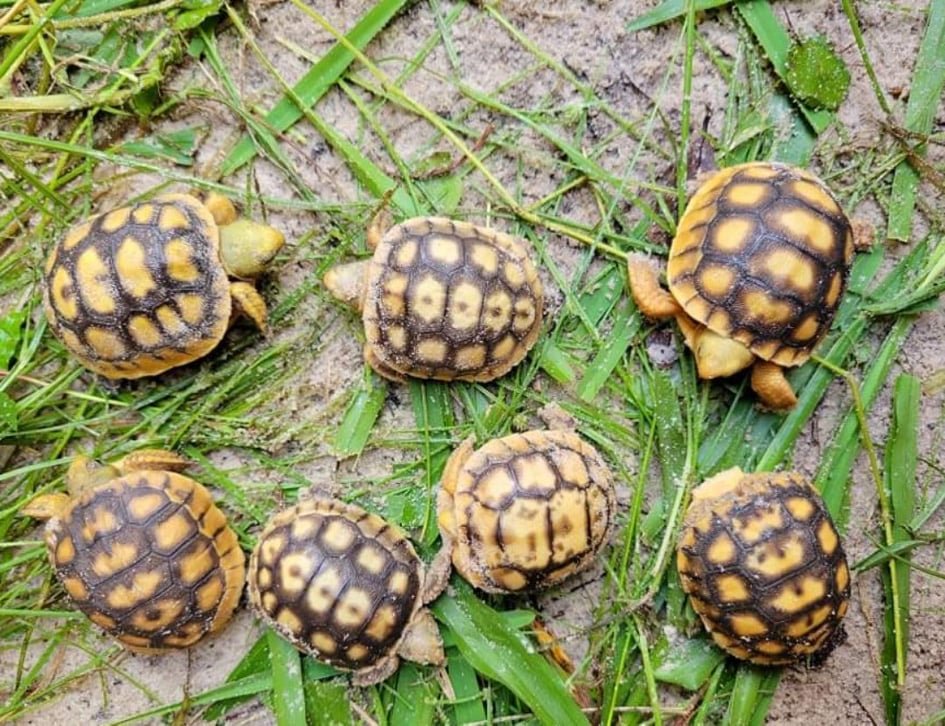Gopher Tortoise
The Gopher tortoise is the only native tortoise found in Florida! Gopher tortoises and their burrows are protected under state law and currently listed as a threatened species. Also listed as vulnerable by IUCN Gopher tortoises live on land and dig deep burrows, preferably in upland habitats to shelter from heat, cold, fire, and predators. Tortoises share their burrow with 350 different species, some of those are also listed as threatened or endangered. The fact that their burrow can be homes or provide protection for so many other living creatures they are considered a "keystone species." Without the gopher tortoise, the health of the ecosystem would decline, and those 350 other species would be impacted. Some of the commensal species that rely on the gopher tortoise burrows are the burrowing owl, Florida mouse, indigo snakes, Florida Pine snakes, rabbits, gopher frogs, and even invertebrates! Their burrow will average 6 to 10 ft deep and can be 15 to 40 ft long! They spend about 80% of their time in the burrow and typically have a home range of 1 to 4 acres. Cool fact! Gopher tortoises can be right or left-handed, and their burrows may steer more towards their preferred limb as they make their way to just above the water table! It takes a gopher tortoise 15 to 20 years to reach maturity. The average adult size of a gopher tortoise is about 10 to 12 inches, with females being the larger of the 2, their weight ranging from 8 to 15 pounds. They have scaly shovel-like front legs that are specialized for digging. They get their name from the fact that they dig burrows like a "gopher."
Back foot
Their back feet look more like an elephant's foot flat and round with toenails. They can live to be well over 60 years old! The male tortoises will be out looking for ladies between March and October. This is when people will often find tortoise in areas they are not seen, including crossing roadways while seeking a mate or fleeing from another male over a territorial dispute.
Front foot
PLEASE ONLY HELP TORTOISES GO IN THE DIRECTION THEY ARE MOVING.
Moving a tortoise miles away from its home can lead to unnecessary stress, injury, illness, or death. See section on "Reasons not to relocate!" at the bottom.
Females will lay on average 5 to 9 eggs that are about the size of a golf ball or ping pong ball between May and July. They prefer nesting in open sunny locations, typically within the soft mound of sand at the entrance of their burrow called the apron. Egg incubation lasts about 80 to 110 days, with baby tortoises hatching from their nests between August and November. Tortoises do not provide maternal care of their eggs, or they're young.
Gopher Tortoise burrow up high.
Tortoise burrow on grass plain.
Photo by Charles Titterington Baby Gopher at opening of burrow.
Hatchlings are yellow-orange and brown/tan in color. The colors and patterns will fade and darken as they mature. Baby Gopher tortoises are often confused with the non-native African sulcata tortoise, or even the south American tortoises know as red or yellow foots. It is illegal to capture and posses gopher tortoises. Please don't blindly collect tortoises from the wild. We do offer ID help if you are concerned you have found an exotic species.
Difference between Gopher tortoises and Sulcata Tortoises
What’s on a gopher tortoise menu?
Lots and lots of plants! Gopher tortoises are herbivorous consuming primarily plant matter. Scientists have discovered over 30 different species of plants that make up the staple diet of the tortoises! Grasses, flowers, berries, and cactus, to name a few! See "Gardening for tortoises" for suggested native plants for wild tortoises. Tortoises get most of their water from the plants they eat but will enjoy a drink from a puddle after heavy rain. The biggest threat to gopher tortoises is primarily habitat loss from habitat fragmentation and degradation. A direct result of urbanization and development. Land desired by builders is the same high, dry habitats that the tortoises call home. Lack of land management through controlled burns, high risk of being struck by cars, and upper respiratory tract disease are also contributors to their decline. Look out for tortoises! Please be aware that dogs are often significant contributors to inflicting injury or death to gopher tortoises. Be tortoise aware and keep an eye out for tortoises on your property. If you have dogs, a quick property check before letting your dogs roam can be an easy way to reduce dangerous situations for tortoises and other wildlife!
Reasons not to relocate!
It can be very tempting to move an animal from their home when certain circumstances arise, there are a few factors you should consider.
Legalities, it's illegal to relocate gopher tortoises without proper permitting.
Disease transmission, Gopher tortoises can contract Upper Respiratory Tract Infection known as URTD. This is a mycoplasma bacterial infection that can be spread to other tortoise populations if a sick individual is introduced.
Stress, Uprooting an animal from their home is very stressful and can lead to a compromised immune system making them more susceptible to disease and parasites.
Homing instincts, Gopher tortoises, and several other turtle species are known to have powerful homing instincts. This means if you take the tortoise several miles away and release the tortoise will then begin to make its way home. Just think of the life-threatening obstacle course they would have to endure to make it back where they started. Here is a list of obstacles to put into perspective. Predators, domestic dogs, roadways, canals, waterways, walls, fences, subdivisions and developments, the elements, the heat of the summer or the cold of winter all while trying to find appropriate food and no shelter, typically wedged alongside a building or tree without access to a burrow to rest while on the voyage that can take weeks or months to make their way back home. IF they make it!




